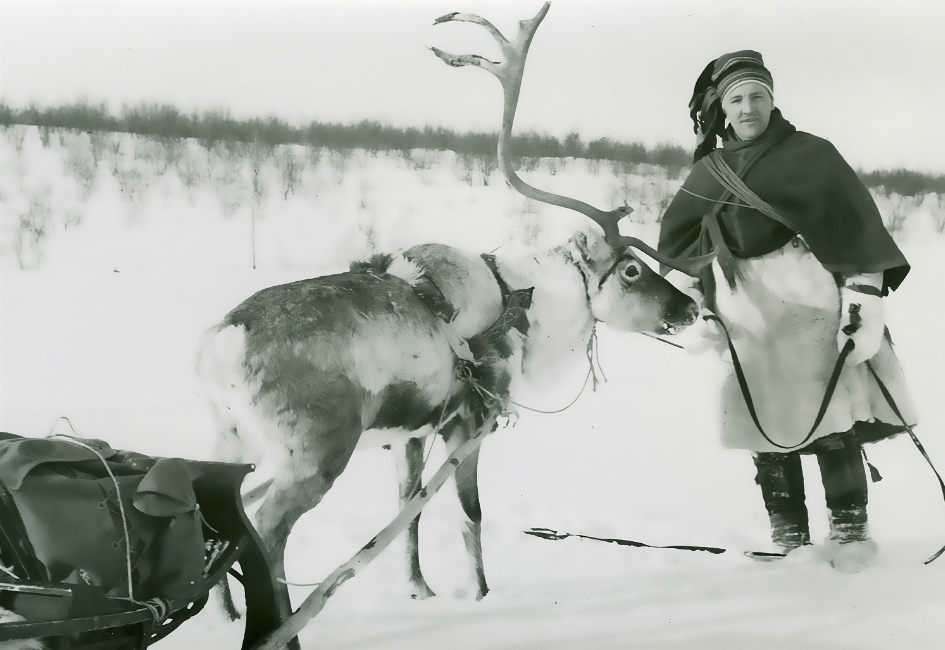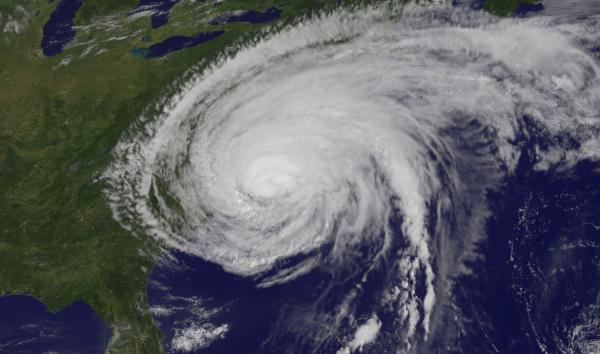
Image: Elisabeth Meyer | A man holds a reindeer harnessed to a sled. Winter, Finnmarksvidda. | 20th Century | Preus Museum, Horten, Norway
Jolly Old St. Nick is rarely pictured without his trusty team of reindeer, often led by red-nosed Rudolph. They are featured in Christmas songs, TV specials, books, and decorations, and there’s a lot we think we know about these Christmas icons. But do the facts add up or does Santa sit on a throne of lies? Let’s take it point by point.
Do reindeer exist?
Yes, reindeer are real. They are also known as caribou (Rangifer tarandus). They are large members of the deer family, and they live in herds of up to a few hundred. In the spring, they sometimes form giant herds of many thousands. (The largest known herd numbers between 400,000 and a million reindeer.)
Do they live at the North Pole?
No. The North Pole is in the middle of the usually ice-covered Arctic Ocean, which makes it hard for terrestrial animals to reach. Reindeer live in the northern stretches of Europe, Asia, and North America. The largest herds are in Russia.
Do they have red noses?
Yes, some really do. One group of scientists determined that some reindeer noses have a red tinge because of the “presence of a highly dense and rich nasal microcirculation”—in other words, a lot of blood vessels packed into a tight space. The blood vessels help regulate the reindeer’s body temperature in the frigid north. Another scientist posits that the red hue is due to a parasitic infection.
So, can they fly?
No. Reindeer are mammals. The only mammals that can fly are bats. Reindeer are not bats.
If they could fly, could they pull a sleigh?
Sure. Pulling Santa’s sleigh, however, is another matter. Some years ago, the U.K.’s Telegraph calculated that it would take 5.6 million reindeer to pull Santa’s cargo of 925,000 tons of toys.
What about Santa’s famous reindeer crew?
Santa has an all-male team of nine reindeer: Dasher, Dancer, Prancer, Vixen, Comet, Cupid, Donner, Blitzen, plus latecomer Rudolph. Right? Wrong. The proof is in the antlers. Reindeer are the only deer where both males and females grow antlers. But adult males shed their racks around Christmastime—which means that Santa’s team is either all female or males who have been castrated. Gulp.
Here are some more reindeer facts to pull out at Christmas Eve dinner:
- Reindeer have color-changing eyes. In summer, when daylight is abundant, the animals’ eyes are gold. When winter rolls around and brings near constant darkness, their eyes turn blue, which increases the scatter of reflected light and helps them see better.
- They are also the only mammals that can see ultraviolet light, which helps them pick out objects in the dim Arctic winter.
- Reindeer can float. One of their two coat layers is made up of hollow hairs that trap air, holding in body heat and giving them some buoyancy.
- Some subspecies of reindeer’s knees make an audible click when they walk, perhaps so the animals can hear each other in blizzard conditions.
- In North America, some reindeer undertake a massive migration of more than 3,000 miles in a year—the longest migration of any land mammal.
All aboard the Franklin Frost Express for a winter experience that’s full S.T.E.A.M. ahead! Explore spectacular model trains circulating through a bustling city, a charming snow-covered valley, and a glowing aurora night! The can't-miss centerpiece of Franklin Frost is the grand 25-foot-tall sparkling Stellar Tree, designed to reflect the mysterious and magnificent night sky.
From hurricanes to blizzards, learn more about meteorology and the forces that shape the world's weather with The Franklin Institute's Weather Portal.




